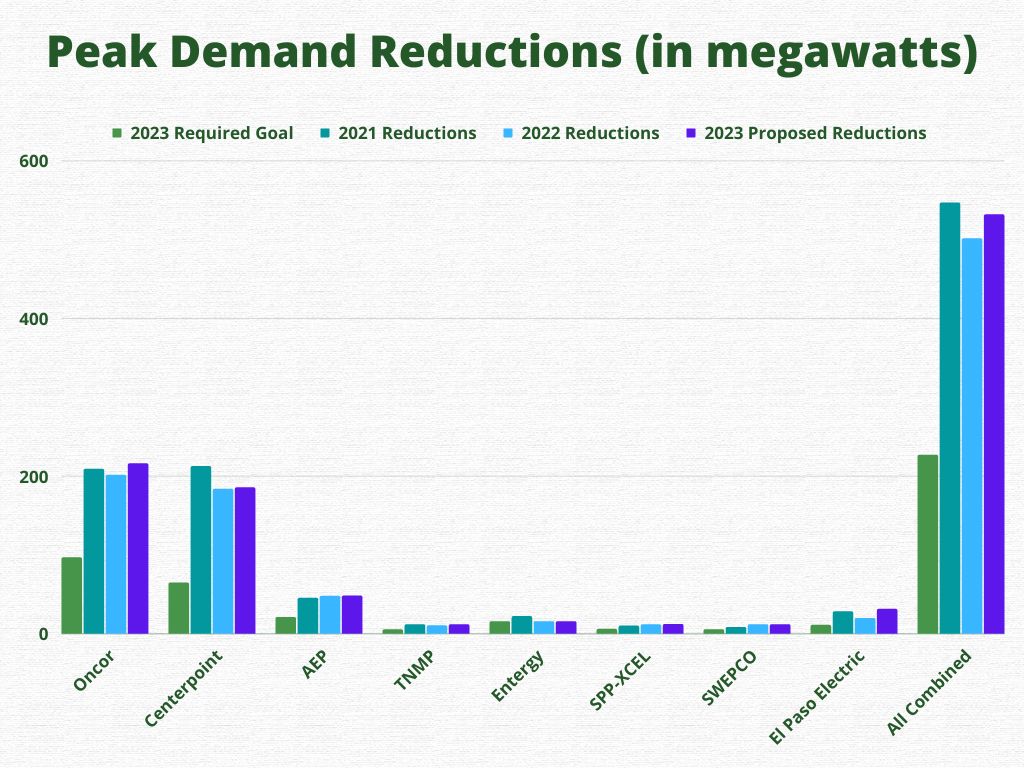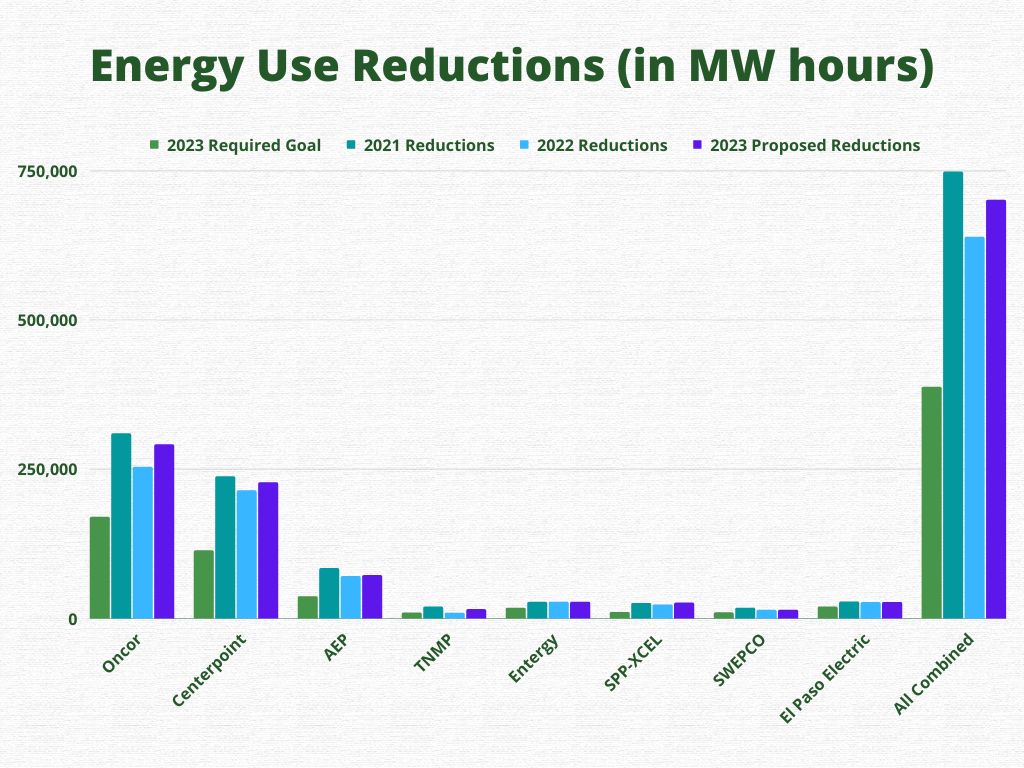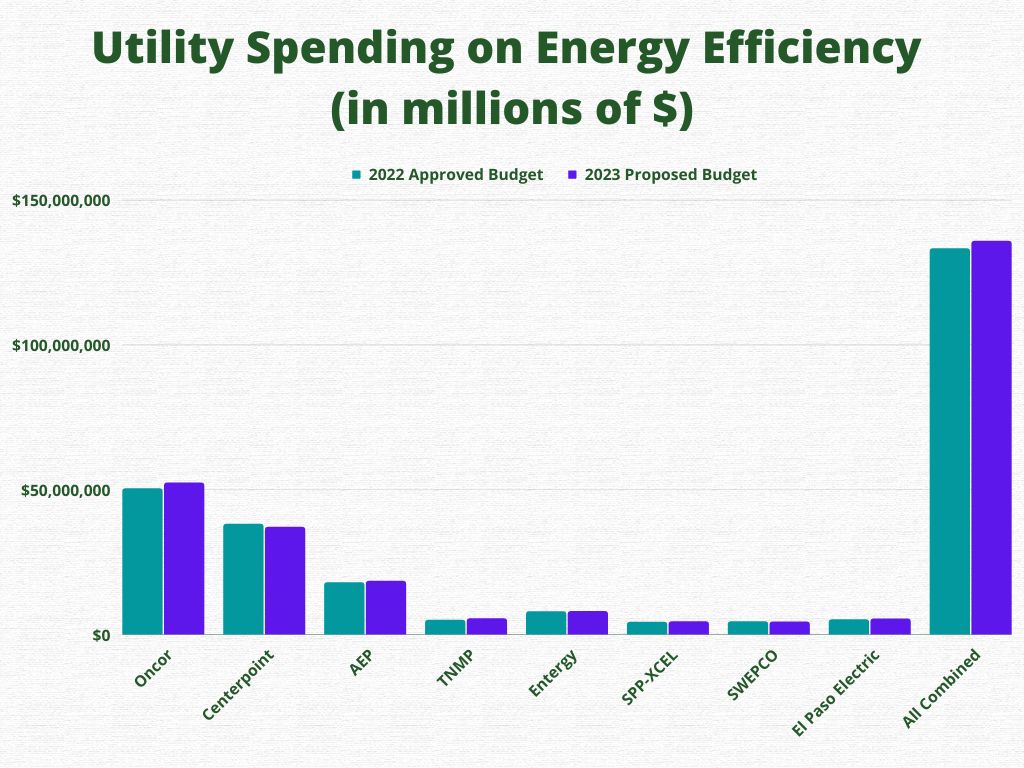
Photo: Canva
By Cyrus Reed
Recent energy efficiency plans from all eight private electric utilities in Texas leave a lot to be desired — especially considering widespread calls to fix our grid as the state recovers from Winter Storm Uri and continues to face extreme, record-breaking weather.
The 2022 Energy Efficiency Plans and Reports, filed with the Public Utility Commission of Texas (PUCT) in April, aim to help electric customers reduce their energy use and peak demand through programs, incentives, and rebates. They’re a response to 2011 legislation that required the utilities to reduce overall residential peak demand every year by at least 0.4 percent and energy consumption by a small amount.
Energy efficiency uses strategies like improving insulation in attics and walls and installing efficient lighting, windows, appliances, and programmable thermostats. It can also include rebates for more efficient HVAC or heat pump systems. This means we need less energy, both individually and collectively, and can reduce bills and our reliance on dirty coal and gas.
The U.S. Department of Energy describes energy efficiency as “one of the easiest and most cost-effective ways to combat climate change, reduce energy costs for consumers, and improve the competitiveness of U.S. businesses.” And, the right programs can help provide environmental justice for people with lower incomes and those living in apartments, who often spend more on energy due to older and inefficient homes, lack of resources, and lack of choice in home updates.
Texas, which ranks dead last in those that have adopted an energy efficiency standard and 29th overall on all energy efficiency policies, has long needed robust energy efficiency programs. And when our grid failed to serve Texans during Winter Storm Uri, their value became more obvious than ever. This is exactly why the utilities’ plans are so disappointing and why we we need to urge the PUCT to require the utilities to meet higher goals.
So what are our utilities proposing?
Utilities are essentially letting the public know they are totally fine with doing about the same in 2023 as they are doing in 2022 and as they did in 2021. The name of the game here is embracing the status quo, year after year, even though natural gas prices are skyrocketing, our grid failed Texans, and we continue to face grid unpredictability as our state rapidly develops amid extreme temperatures. Energy efficiency demand reductions and savings would remain the same if the PUCT approves these plans.
The eight utilities are proposing to reduce peak demand in 2023 by 531 megawatts. While this is about two-and-a-half times the required goal of 227 MWs, it is lower than what they achieved in 2021 (547 MWs) and just barely above what they expect to achieve this year (501 MWs). The utilities expect to reduce overall energy sales by 701,043 MW hours, about double the required reduction of 387,952 MWhs, but down slightly from what they achieved in 2021 (748,135 MWhs) and just slightly above the 2022 expected total (638,887 MWhs).
But wait, the utilities are essentially doubling their reductions above what’s required — ain’t that worthy of praise? Well, the Legislature set these goals more than 10 years ago and has not tweaked them since 2011. And, utilities can earn a performance bonus that essentially pays them ratepayer money for exceeding these outdated and underwhelming goals. Utilities are willing to do the bare minimum — design programs to exceed required goals and earn a healthy bonus — but they are unwilling to propose meaningful reductions. And paving the way is a PUCT that has yet to prioritize these programs, even after the winter storm.


How much money are utilities spending?
Just like their lackluster reduction ambitions, the utilities are proposing spending nearly the same on energy efficiency: roughly $135.8 million next year vs. $133 million in 2022. While all utilities have not yet filed their plans for how they’ll pay for the programs, the cost impact on the average residential household would likely be very similar in 2023 as it was in 2022, between $0.98 and $1.74 per month depending on the utility.
While the PUCT should absolutely ensure that costs on residential and commercial consumers are kept reasonable, there is room to grow the programs especially considering that paying a little for energy efficiency saves ratepayers money. And, seven of the eight utilities are still below the “cost caps” imposed by the PUCT. Austin Energy residential customers, for example, spend approximately $5 per month to support energy efficiency and local solar programs, and CPS Energy in San Antonio is discussing raising their current budget of approximately $3.50 per month to $5 to continue and expand a program that has prevented the need for building another multimillion-dollar gas plant, reduced bills, and cost much less than producing energy of any kind.

To put this in perspective, average electricity prices are already up some 20 percent this year compared to last year, with the high cost of gas and the extra “insurance” that the Electric Reliability Council of Texas (ERCOT) is purchasing to make the system more reliable. These rising costs could be tampered with a small investment increase in robust energy efficiency programs.
What comes next?
The utilities are now in the process of proposing the amounts that ratepayers would have to pay for the energy efficiency plans, which begins a process toward final approval. PUCT can act now, however, to open up a rulemaking process to significantly reform the modest programs into robust efforts that reduce energy burden, create new jobs, and make our grid more resilient.
If PUCT is serious about fixing the grid and serving Texans, it can and should require the utilities to meet higher goals. To take action, add your voice to those asking the PUC to act now for energy efficiency!